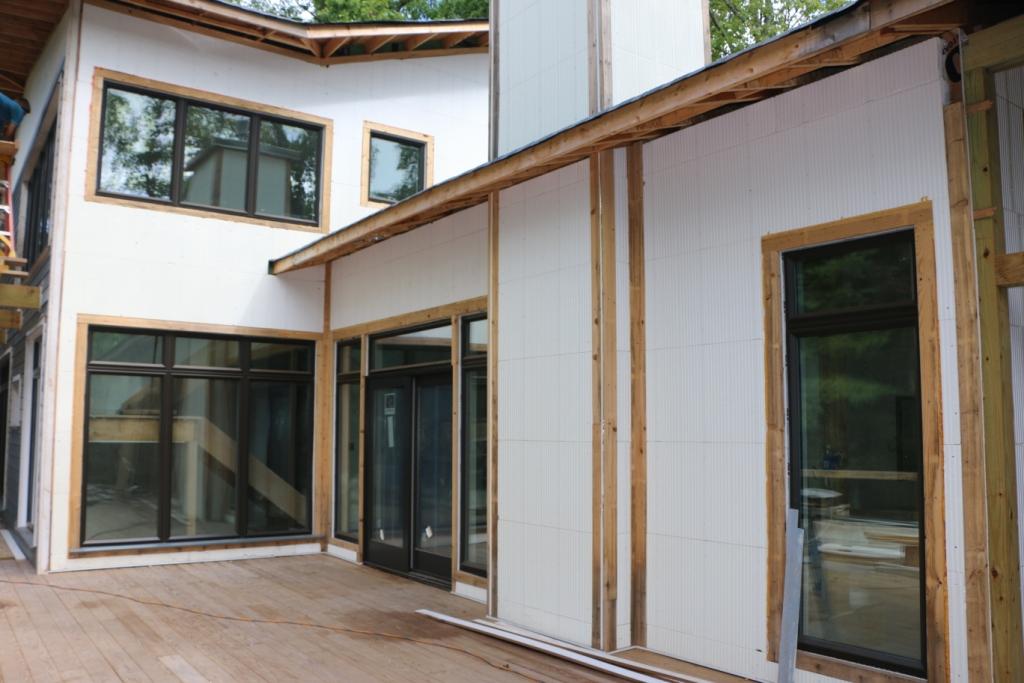When homeowners pose the question, “Should I insulate my exterior walls?” they’ll receive a range of feedback. With InSoFast insulation panels, the project becomes much more realistic, beneficial, and affordable.
R-value units indicate the strength of insulation. As R-values rise, so does the resistance to thermal energy loss. The power of InSoFast insulation panels comes from the strength of the closed-cell EPS foam insulation along with the tightly connected nature of the continuous insulation wall system. Our patented and patent pending panels apply to any and all flat surfaces, providing stellar insulation that outperforms the R-values indicated on the labels of the most popular competing insulation products.
Founded in 2006, InSoFast, LLC, designs and produces insulation panels that work incredibly well for commercial and DIY purposes. Made in America and shipped directly from the factory to the project site, our panels are ideal for all insulation purposes.

The Ins and Outs of Exterior Wall Insulation
Older residences may lack sufficient exterior wall insulation, making utility costs on the extreme end of expensive and the home still difficult to maintain at a consistent temperature. Yet, retrofitting of exterior wall insulation might seem to be too difficult or expensive a challenge to undertake. InSoFast exterior wall panels resolve this challenge.
Evaluating the presence and quality of the existing wall insulation should be the first step. An easy way to do so is turn off the power at the breaker box and check exterior outlets for insulation. You’ll just take off the cover of outlet boxes on each exterior wall and take a peek with a straw or pen and a flashlight to check for insulation.
Retrofit Exterior Wall Insulation
When your exterior walls completely lack insulation, you can choose to have insulation blown in through small holes drilled into the home’s exterior. This option is definitely not a do-it-yourself level project, nor is it inexpensive. You’ll also have unsightly spots left on your home’s exterior that you’ll likely have to try to match to the rest of the exterior paint on your own.
Alternatively, you can choose to install InSoFast exterior panels directly onto the exterior walls and then cover with your choice of finishing material including Cultured Stone Veneer, Thin Brick Veneer, Vented Rain Screen, Cement Board Siding, Steel Siding, 3-Coat Stucco, Vertical Siding, and Vertical Siding Rain Screen.
Additional Areas to Add Insulation
The exterior walls of older homes may not be the only places that need insulation added. Garages, attics, and basements should also be insulted to keep the conditioned air at a stable temperature and within the home. These places are also easily insulated with InSoFast insulation panels.
Reject the Fiberglass Option
For many, the obvious choice for insulation will be fiberglass batting, but this clarity is reflexive and often uninformed. Just because a material is commonly used and affordable does not mean that it’s always right. Fiberglass insulation will be ruined by water infiltration with the result being no insulation coverage and a petri dish for the growth of mold and mildew.
InSoFast insulation panels connect to one another intuitively. The connections are tight, foolproof, straight, and true, and installation requires a few common tools and slight construction skills.
Now you know the answer to your own question: Should I insulate my exterior walls? The next step should be to order a supply of InSoFast insulation panels. You can do so online or by calling (888) 396-9677 today.


